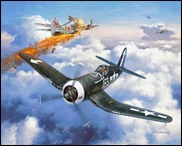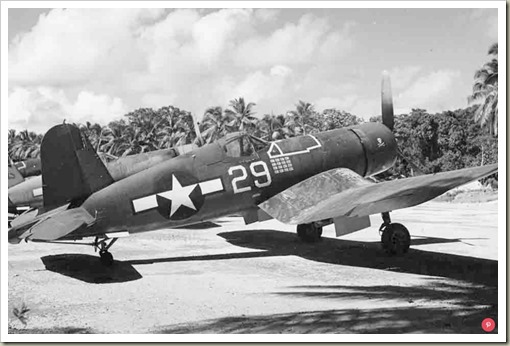WW2 Aviation History: Why are F4U-1 Corsairs so taped up?
Posted By RichC on June 12, 2021
 Well talking to Taylor at his birthday dinner, I mentioned someone posted a photo of a WW2 Vought F4U Corsair and asked about the “stripes” … or duct tape … on the cowl in front of the pilot. The answer from a HistoryNet.com researcher below is a great aviation tidbit for those with a curious mind for military history (see answer below).
Well talking to Taylor at his birthday dinner, I mentioned someone posted a photo of a WW2 Vought F4U Corsair and asked about the “stripes” … or duct tape … on the cowl in front of the pilot. The answer from a HistoryNet.com researcher below is a great aviation tidbit for those with a curious mind for military history (see answer below).
Also … Japanese pilots regarded the US Marine and Navy’s Corsairs the most formidable American fighters of World War II. U.S. aviators achieved an 11:1 kill ratio against Japanese pilots and planes.
Every time I see a picture of an F4U Corsair, they frequently have white stripes in front of the cockpit windscreen. These appear to surround the fuel tank and maybe are tape of some kind. Can you tell me their purpose?
Thanks,
Bob Hewitt? ? ?
Dear Mr. Hewitt,
Among the many problems that turned up in operational F4U-1 Corsairs was a leaky fuel tank, which was located between the pilot and the engine for the most favorable center of gravity. Corsair pilots I spoke to said that a virtually universal practice to keep the windshield clean was to seal the fuselage panels with strips of white tape. The oil on the cowling flaps also leaked, spattering the windshield and also affecting visibility, hence the upper cowling gills were fixed shut and they were eliminated entirely on later models.
Sincerely,
Jon Guttman
Research Director
World History Group

Comments